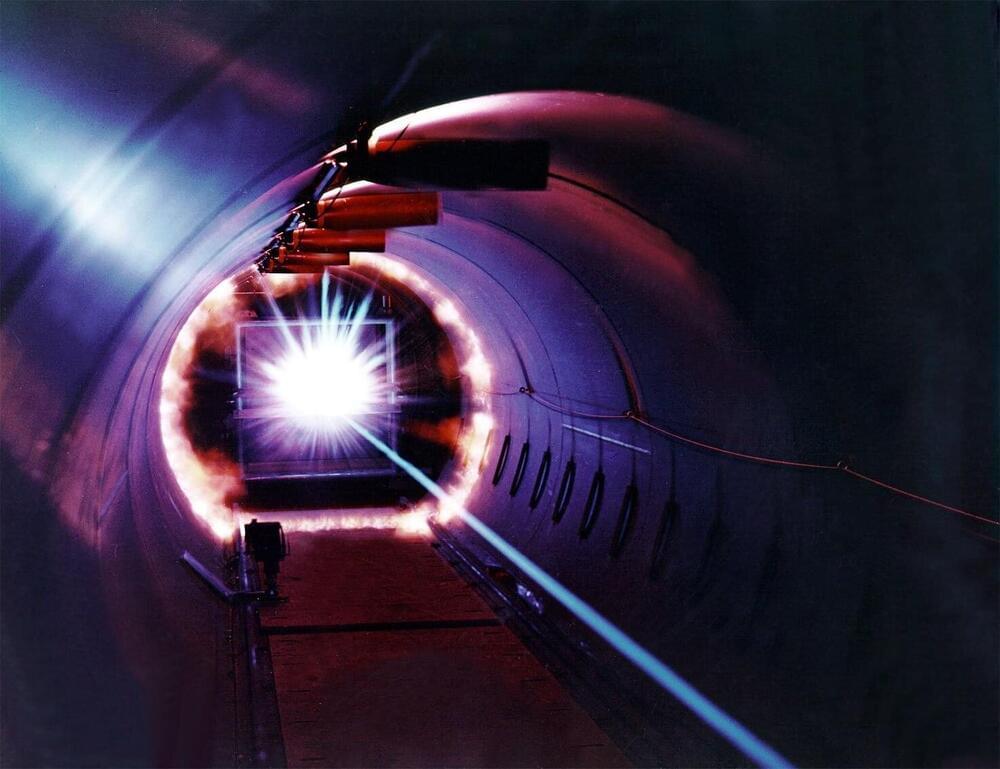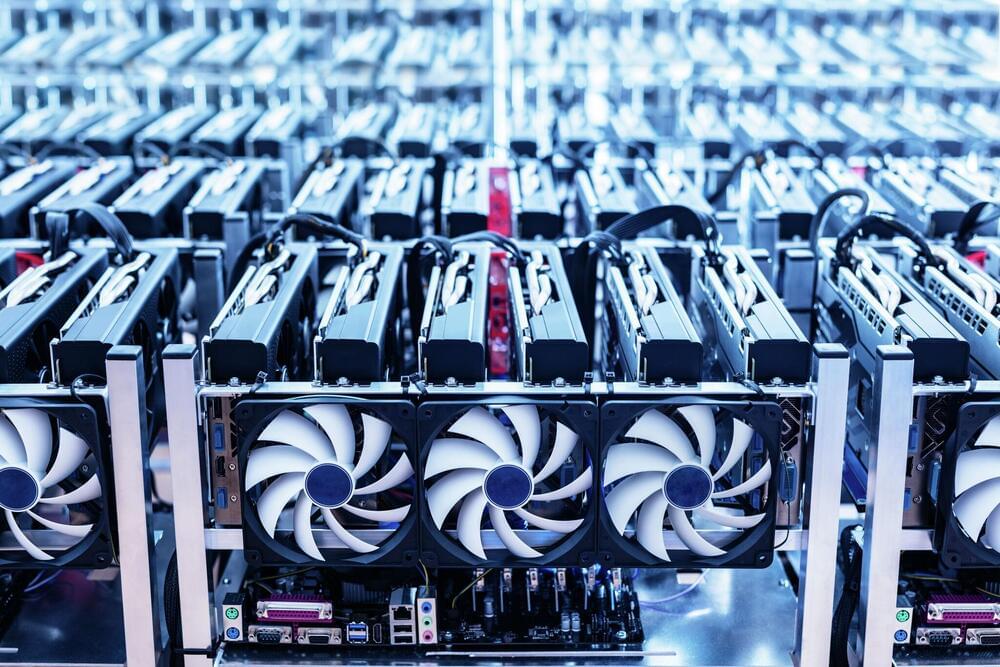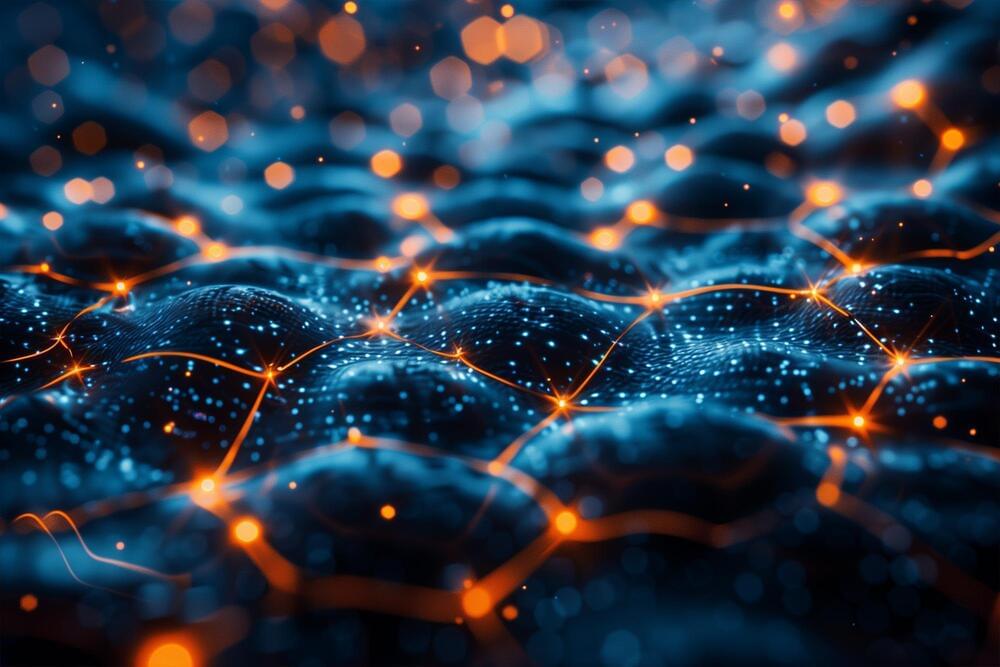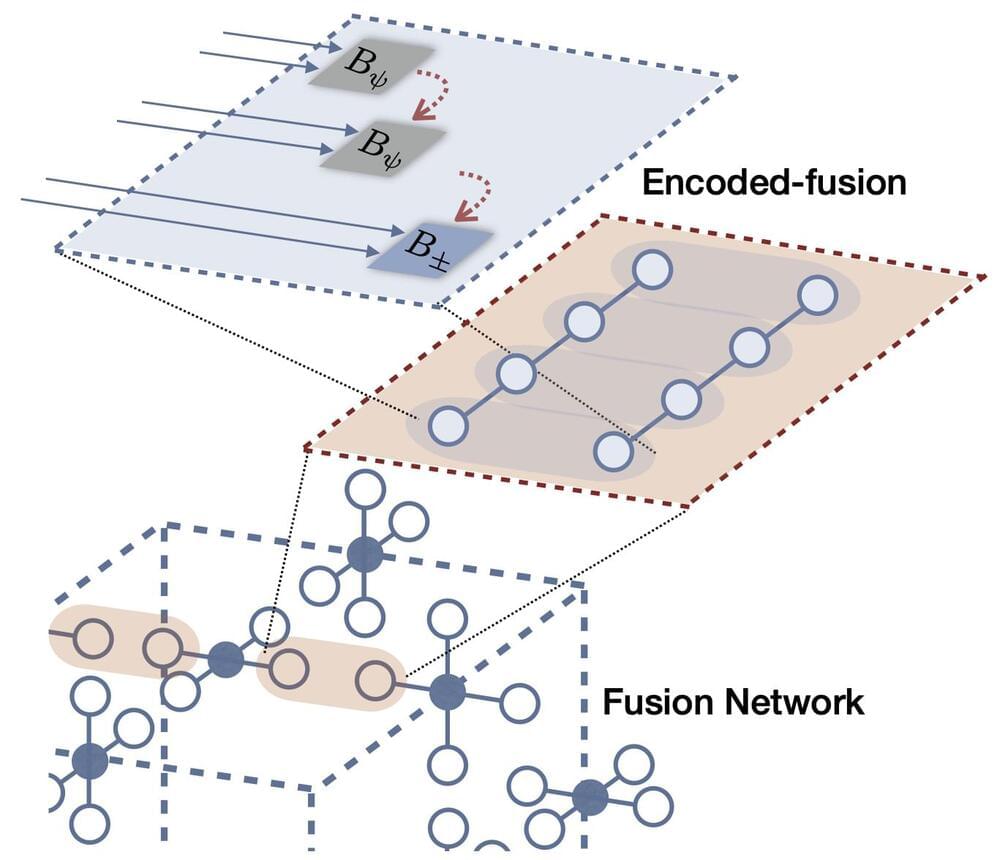Ed Boyden is a professor at the MIT Media Lab working on the most advanced brain-computer interfacing technology currently available, optogenetics. At Singularity Summit 2009.
Category: computing – Page 196
An unconditional distribution learning advantage with shallow quantum circuits
https://scirate.com/arxiv/2411.
Researchers present a #quantummachinelearning advantage of families of constant depth local quantum circuits over reasonably constrained log-log-depth classical circuits.
Quantum…
One of the core challenges of research in quantum computing is concerned with the question whether quantum advantages can be found for near-term quantum circuits that have implications for practical applications. Motivated by this mindset, in this work, we prove an unconditional quantum advantage in the probably approximately correct (PAC) distribution learning framework with shallow quantum circuit hypotheses. We identify a meaningful generative distribution learning problem where constant-depth quantum circuits using one and two qubit gates (QNC^0) are superior compared to constant-depth bounded fan-in classical circuits (NC^0) as a choice for hypothesis classes. We hence prove a PAC distribution learning separation for shallow quantum circuits over shallow classical circuits. We do so by building on recent results by Bene Watts and Parham on unconditional quantum advantages for sampling tasks with shallow circuits, which we technically uplift to a hyperplane learning problem, identifying non-local correlations as the origin of the quantum advantage.
Submitted 23 Nov 2024 to Quantum Physics [quant-ph]

X-ray diffraction enables measurement of in-situ ablation depth in aluminum
When laser energy is deposited in a target material, numerous complex processes take place at length and time scales that are too small to visually observe. To study and ultimately fine-tune such processes, researchers look to computer modeling. However, these simulations rely on accurate equation of state (EOS) models to describe the thermodynamic properties—such as pressure, density and temperature—of a target material under the extreme conditions generated by the intense heat of a laser pulse.
One process that is insufficiently addressed in current EOS models is ablation, where the irradiation from the laser beam removes solid material from the target either by means of vaporization or plasma formation (the fourth state of matter). It is this mechanism that launches a shock into the material, ultimately resulting in the high densities required for high pressure experiments such as inertial confinement fusion (ICF).
To better understand laser–matter interactions with regard to ablation, researchers from Lawrence Livermore National Laboratory (LLNL), the University of California, San Diego (UCSD), SLAC National Accelerator Laboratory and other collaborating institutions conducted a study that represents the first example of using X-ray diffraction to make direct time-resolved measurements of an aluminum sample’s ablation depth. The research appears in Applied Physics Letters.
Global Photonics Engineering Contest
Early Bird Opportunity in the Global Photonics Engineering Contest.
: All submissions received by 31st December 2024, will receive personalized feedback from Photon Delta engineers.
Submit your application now: https://wevlv.co/photondelta-s.
#engineering #photonics #technology
Design the next generation application with Photonic Chips.

Texas seeks to regulate cryptocurrency mining on ERCOT grid
The Public Utilities Commission of Texas (PUCT) on Thursday adopted a rule requiring virtual currency mining facilities in the region maintained by the Energy Reliability Council of Texas (ERCOT) to register with the commission. In these registrations, the PUCT seeks each facility to share its location, ownership information and demand for electricity.
Cryptocurrency mining, in which computers crack codes in order to verify crypto transactions, has been on the rise in Texas for the past few years, specifically after China banned the practice in May 2021. The state itself was luring miners to set up shop here, offering relative regulatory freedom at first. But in the last year, Texans have been speaking out against the mines, which operate scores of their large computers at all hours of the day. The computer usage, coupled with the fans required to cool down the hard-working machines, can use up a lot of power and make the kind of noise that residents say make them sick.

Can Quantum Computers Solve the Many-Body Puzzle? Physicists Develop New Metric
The V-score benchmarks classical and quantum algorithms in solving the many-body problem. The study highlights quantum computings potential for tackling complex material systems while providing an open-access framework for future research innovations.
Scientists aspire to use quantum computing to explore complex phenomena that have been difficult for current computers to analyze, such as the characteristics of novel and exotic materials. However, despite the excitement surrounding each announcement of “quantum supremacy,” it remains challenging to pinpoint when quantum computers and algorithms will offer a clear, practical advantage over classical systems.
A large collaboration led by Giuseppe Carleo, a physicist at the Swiss Federal Institute for Technology (EPFL) in Lausane and the member of the National Center for Competence in Research NCCR MARVEL, has now introduced a method to compare the performance of different algorithms, both classical and quantum ones, when simulating complex phenomena in condensed matter physics. The new benchmark, called V-score, is described in an article just published in Science.
Tiny Implant Aims to Treat Depression in Your Brain
Neurotech startup Motif says it has built a pea-sized brain chip that can treat mental illnesses, including depression, without the side effects of conventional drugs. Watch Posthuman with Emily Chang to learn more about the power of brain-computer interfaces.
——-
Like this video? Subscribe: https://www.youtube.com/Bloomberg?sub_…
Get unlimited access to Bloomberg.com for $1.99/month for the first 3 months: https://www.bloomberg.com/subscriptio…
Bloomberg Originals offers bold takes for curious minds on today’s biggest topics. Hosted by experts covering stories you haven’t seen and viewpoints you haven’t heard, you’ll discover cinematic, data-led shows that investigate the intersection of business and culture. Exploring every angle of climate change, technology, finance, sports and beyond, Bloomberg Originals is business as you’ve never seen it.
Subscribe for business news, but not as you’ve known it: exclusive interviews, fascinating profiles, data-driven analysis, and the latest in tech innovation from around the world.
Visit our partner channel Bloomberg Quicktake for global news and insight in an instant.

Improving Army logistics with quantum computing
Heeding those sentiments, the Australian Army is strategically investing in technological innovation to find better solutions to the complex logistics challenges they face in managing the efficient and safe deployment of personnel and equipment on the battlefield. For a difficult class of problems in an area called “optimization”, quantum computing is on the roadmap for exploration.
With the help of our quantum infrastructure software, they’ve now been able to test and validate a quantum computing solution on real hardware that promises to outperform their existing methods.

Developed proprietary quantum error correction technology beyond the world’s leading quantum computing companies
Dr. Seung-Woo Lee and his team at the Quantum Technology Research Center at the Korea Institute of Science and Technology (KIST) have developed a world-class quantum error correction technology and designed a fault-tolerant quantum computing architecture based on it.
- Quantum error correction is a key technology in the implementation and practicalization of quantum computing.
- Groundbreaking quantum error correction technology contributes to the development of K-quantum computing deployments.
Solving the problem of error is essential for the practical application of quantum computing technologies that surpass the performance of digital computers. Information input into a qubit, the smallest unit of quantum computation, is quickly lost and error-prone. No matter how much we mitigate errors and improve the accuracy of qubit control, as the system size and computation scale increase, errors accumulate and algorithms become impossible to perform. Quantum error correction is a way to solve this problem. As the race for global supremacy in quantum technology intensifies, most major companies and research groups leading the development of quantum computing are now focusing on developing quantum error correction technology.
